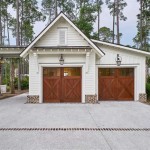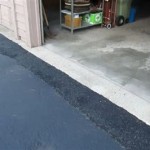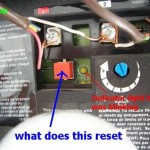Can You Put A Dryer Vent In The Garage Ceiling: Florida Code Considerations
The question of whether a dryer vent can be routed through a garage ceiling in Florida is not a simple yes or no. It hinges on several factors, primarily adherence to Florida Building Code, the specific construction of the garage, and safety considerations. Improper venting can lead to a number of problems, including fire hazards and reduced dryer efficiency. A comprehensive understanding of the relevant regulations and best practices is essential before undertaking such a project.
Dryer vents are designed to expel hot, moist air and lint produced during the drying cycle. This process is crucial for efficient dryer operation and preventing moisture buildup within the home. Trapped moisture can foster mold and mildew growth, leading to health problems and structural damage. Furthermore, accumulated lint poses a significant fire risk, as it is highly flammable. Therefore, proper venting is not just a matter of convenience, but a vital safety measure.
In Florida, the Florida Building Code (FBC) governs all aspects of construction, including ventilation systems. The FBC adopts and amends the International Residential Code (IRC), which contains specific provisions related to dryer vent installations. These provisions address material requirements, duct length, termination locations, and fire safety. Failure to comply with these codes can result in failed inspections, fines, and potentially dangerous conditions. Local municipalities may also have additional requirements, so it's imperative to check with the local building department before commencing any work.
Key Point 1: Understanding Florida Building Code and the International Residential Code
The Florida Building Code Section M1502 addresses clothes dryer exhaust systems. It references the International Residential Code (IRC) which provides detailed specifications. The IRC specifies that dryer exhaust ducts must be constructed of rigid metal duct, having a smooth interior finish. Flexible transition ducts are permitted to connect the dryer to the rigid duct, but these are subject to length limitations and must be listed and labeled.
The code emphasizes the importance of proper materials to prevent lint buildup and fire hazards. Plastic or foil ducts are generally prohibited due to their flammability and tendency to trap lint. The smooth interior of rigid metal ducts minimizes friction and allows for efficient airflow, reducing the risk of clogs. Transition ducts should be kept as short as possible, ideally no more than eight feet in length, to further reduce the risk of lint accumulation. The FBC further mandates that exhaust ducts must be independent of other systems and properly supported.
A critical aspect of the code relates to the maximum developed length of the duct. The IRC states that the maximum length of a clothes dryer exhaust duct shall not exceed 35 feet from the dryer location to the outlet terminal. This length must be reduced by 2.5 feet for each 45-degree bend and 5 feet for each 90-degree bend. Exceeding the maximum length can significantly reduce dryer efficiency, increase drying times, and elevate the risk of fire due to lint buildup within the duct.
Furthermore, the termination point of the vent must comply with specific requirements. The exhaust vent terminal must be located at least 3 feet from any opening into the building, including windows and doors. This distance prevents exhaust gases and lint from re-entering the building. The termination point must also be equipped with a backdraft damper to prevent outside air from entering the duct when the dryer is not in use. This helps to maintain energy efficiency and prevent drafts.
It is imperative to obtain the necessary permits before installing or modifying a dryer vent system. The local building department will review the plans and inspect the installation to ensure compliance with the Florida Building Code. Failure to obtain permits can result in fines and require the removal of the non-compliant installation.
Key Point 2: Garage Environment Considerations and Fire Safety
Garages present unique challenges for dryer vent installations due to their potential for storing flammable materials and the presence of vehicles that emit exhaust fumes. These factors necessitate a heightened level of safety when routing a dryer vent through the garage ceiling. The Florida Building Code addresses these concerns by requiring specific fire-resistant construction techniques and materials.
One primary concern is the potential for fire spread. Garages are often used for storing gasoline, oil, cleaning supplies, and other flammable substances. In the event of a fire, these materials can quickly ignite, posing a significant threat to the adjacent living spaces. Therefore, the garage ceiling often acts as a fire barrier to slow the spread of fire between the garage and the occupied area above. Altering or penetrating this fire barrier with a dryer vent must be done carefully to maintain the fire-resistance rating.
If the garage ceiling is a fire-rated assembly that is designed to provide a specific fire-resistance rating (e.g., one-hour fire-rated), any penetrations for the dryer vent must be properly sealed with fire-rated caulk or sealant to maintain the integrity of the fire barrier. The duct itself must also be constructed of non-combustible materials, as specified by the FBC. The use of flexible connectors should be minimized and, if used, must be listed and labeled for dryer venting applications, in addition to being fire resistant.
Another concern is the potential for carbon monoxide (CO) intrusion. Garages are often used for parking automobiles, which emit CO during operation. If the dryer vent duct has leaks or is improperly sealed, CO could potentially enter the duct and be drawn into the living spaces. To mitigate this risk, the duct must be airtight and properly sealed at all connections. Regular inspections should be conducted to identify and repair any leaks.
Considering the potential fire hazards and the risk of CO intrusion, it is advisable to install a carbon monoxide detector in the garage, particularly if the dryer vent is routed through the ceiling. This provides an early warning of any CO buildup and allows occupants to take appropriate action. Additionally, regular maintenance of the dryer vent system, including cleaning the duct to remove lint buildup, is essential for preventing fire hazards and ensuring efficient dryer operation.
Key Point 3: Alternatives and Best Practices for Dryer Venting in Florida
Given the complexities and potential challenges associated with routing a dryer vent through a garage ceiling in Florida, it is prudent to explore alternative venting options and adopt best practices for installation and maintenance. These alternatives may offer a safer and more efficient solution, while ensuring compliance with the Florida Building Code.
One viable alternative is to vent the dryer directly through an exterior wall. This eliminates the need to route the duct through the garage ceiling and simplifies the installation process. The vent terminal should be located at least 3 feet from any openings into the building and equipped with a backdraft damper. The duct length should be minimized to ensure efficient airflow and reduce the risk of lint buildup. This option is often the most straightforward and cost-effective solution, provided that an exterior wall is readily accessible.
Another alternative is to use a ventless dryer. Ventless dryers utilize condensation or heat pump technology to remove moisture from clothes without the need for an external vent. These appliances recycle the hot air within the dryer, making them more energy efficient. While ventless dryers are typically more expensive than conventional dryers, they offer greater flexibility in terms of placement and eliminate the need for ductwork. However, they do require regular maintenance to clean the lint filter and condensation reservoir.
If routing the dryer vent through the garage ceiling is unavoidable, several best practices should be followed to ensure a safe and compliant installation. First, prioritize the use of rigid metal duct with smooth interior surfaces. Avoid using flexible plastic or foil ducts, as these are prone to lint buildup and are not fire-resistant. Ensure that all duct connections are securely fastened with metal tape or clamps to prevent leaks. All seams in the ducting should be sealed with approved foil tape to minimize air leakage.
Second, minimize the length of the duct and the number of bends. Each bend reduces airflow and increases the risk of lint accumulation. If bends are necessary, use gradual bends rather than sharp angles. The duct should be properly supported to prevent sagging or damage. Regularly inspect the duct for any signs of leaks or damage and repair them promptly. A licensed HVAC contractor should be consulted if the ductwork is longer than 35 feet.
Third, install a lint trap filter in the dryer exhaust duct. This will help to capture lint before it accumulates in the duct, reducing the risk of fire and improving dryer efficiency. Clean the lint trap filter regularly, ideally after each drying cycle. Also, consider installing a duct booster fan if the duct length is excessive or if the dryer is located far from the vent terminal. A booster fan can help to improve airflow and prevent lint buildup. Regardless of the dryer venting solution chosen, it is highly recommended to consult with a qualified and licensed contractor to ensure compliance with all applicable codes and regulations. A professional can assess the specific circumstances and provide expert guidance on the best course of action.

Venting A Clothes Dryer Into Garage Doityourself Com Community Forums

Atypical And Typical Dryer Vent Locations The Right Spots

What Is Code For Dryer Vents
The Exhaust Of My Dryer Vents To Crawl Space House Is That Correct Should I Change It Or Leave As Appaly Has Always Been Like
Mini Split In Garage That Has A Vent Bogleheads Org

Can A Clothes Dryer Vent In Mobile Manufactured Home Terminate The Crawl Space
Is It Ok To Vent A Dryer Into House Quora

Is It Ever Helpful To Use A Powered Attic Ventilator Energy Vanguard

How To Install Code Appropriate Dryer Ventilation

2024 Florida Building Code Residential 7th Edition Icc Digital Codes
Related Posts








